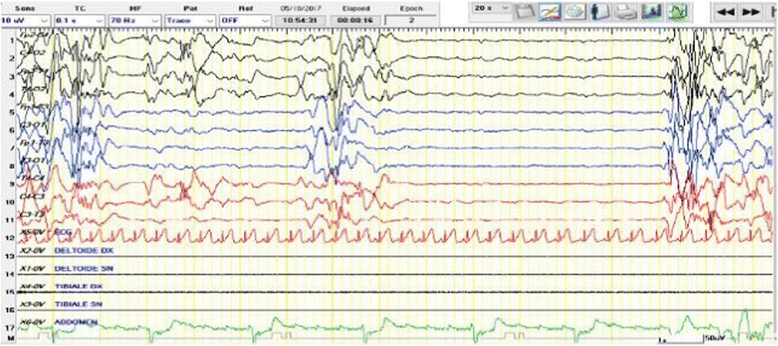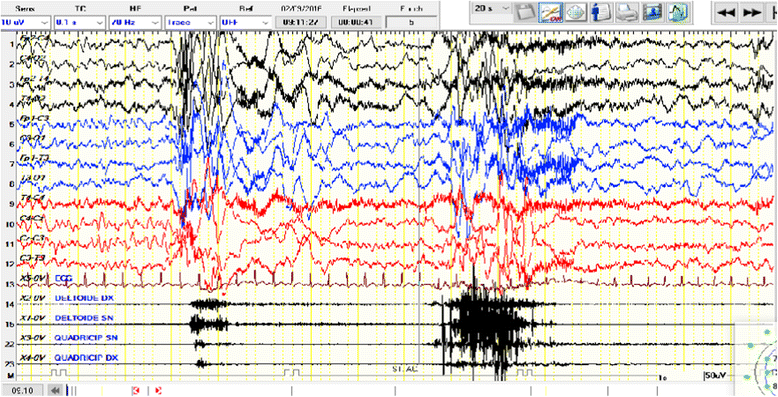Benign and severe early-life seizures: a round in the first year of life
- PMID: 29764460
- PMCID: PMC5952424
- DOI: 10.1186/s13052-018-0491-z
Benign and severe early-life seizures: a round in the first year of life
Abstract
At the onset, differentiation between abnormal non-epileptic movements, and epileptic seizures presenting in early life is difficult as is clinical diagnosis and prognostic evaluation of the various seizure disorders presenting at this age. Seizures starting in the first year of life including the neonatal period might have a favorable course, such as in infants presenting with benign familial neonatal epilepsy, febrile seizures simplex or acute symptomatic seizures. However, in some cases, the onset of seizures at birth or in the first months of life have a dramatic evolution with severe cerebral impairment. Seizure disorders starting in early life include the "epileptic encephalopathies", a group of conditions characterized by drug resistant seizures, delayed developmental skills, and intellective disability. This group of disorders includes early infantile epileptic encephalopathy also known as Ohtahara syndrome, early myoclonic encephalopathy, epilepsy of infancy with migrating focal seizures, infantile spasms syndrome (also known as West syndrome), severe myoclonic epilepsy in infancy (also known as Dravet syndrome) and, myoclonic encephalopathies in non-progressive disorder. Here we report on seizures manifesting in the first year of life including the neonatal period. Conditions with a benign course, and those with severe evolution are presented. At this early age, clinical identification of seizures, distinction of each of these disorders, type of treatment and prognosis is particularly challenging. The aim of this report is to present the clinical manifestations of each of these disorders and provide an updated review of the conditions associated with seizures in the first year of life.
Keywords: Early onset seizures; Epileptic encephalopathies; Infantile epilepsy; Seizures.
Conflict of interest statement
Ethics approval and consent to participate
Ethics approval was obtained by the Local Ethical Committee (University Hospital Policlinico-Vittorio Emanuele, Catania, Italy).
Competing interests
Giovanni Corsello is the Editor-in-Chief of Italian Journal of Pediatrics, and declares that he has no competing interests in light of this. The remaining authors also declare that they have no competing interests.
Publisher’s Note
Springer Nature remains neutral with regard to jurisdictional claims in published maps and institutional affiliations.
Figures



References
-
- Major P, Thiele EA. Seizures in children. Pediatr Rev. 2007;28:363–371. - PubMed
-
- Sidhu R, Velayudam K, Barnes G. Pediatric seizures. Pediatr Rev. 2013;34:333–341. - PubMed
-
- Fisher RS, Cross JH, D'Souza C, French JA, Haut SR, Higurashi N, Hirsch E, Jansen FE, Lagae L, Moshé SL, Peltola J, Roulet Perez E, Scheffer IE, Schulze-Bonhage A, Somerville E, Sperling M, Yacubian EM, Zuberi SM. Instruction manual for the ILAE 2017 operational classification of seizure types. Epilepsia. 2017;58:531–542. - PubMed
-
- Fisher RS, Cross JH, French JA, Higurashi N, Hirsch E, Jansen FE, Lagae L, Moshé SL, Peltola J, Roulet Perez E, Scheffer IE, Zuberi SM. Operational classification of seizure types by the international league against epilepsy: position paper of the ILAE Commission for Classification and Terminology. Epilepsia. 2017;58:522–530. - PubMed
-
- Berg AT, Langfitt JT, Testa FM, Levy SR, DiMario F, Westerveld M, Kulas J. Global cognitive function in children with epilepsy: a community-based study. Epilepsia. 2008;49(4):608–614. - PubMed
Publication types
MeSH terms
LinkOut - more resources
Full Text Sources
Other Literature Sources
Medical

